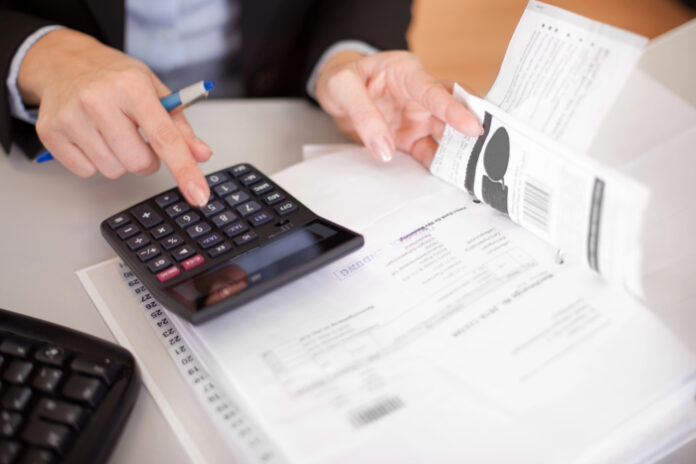By Jim Conroy, CEO of The Neat Company
Deck: As a business transitions from the dining room table to a garage or home office and eventually to a traditional workspace, it must consider more than just where to place a filing cabinet. Buying office machinery, delivery vans, and even a building means one must understand about depreciation — how it will affect your bottom line and how to report it on your taxes.
Key Takeaways
- Depreciation reduces the value of assets on your balance sheet to reflect their current value, not their acquisition value.
- The IRS will not permit the cost of most fixed assets to be deducted in a single year but spread across several years.
- To understand about depreciation, there are four basic ways to depreciate your assets.
Nothing you buy and use for your business will last forever, whether it’s a car, a desk, or a computer. When an asset can be expected to be useful for years, depreciation allows businesses to reflect its gradual wear and tear by prorating its cost over its useful life. One advantage is reducing taxable income, which consequently reduces how much tax a business must pay.
What Is Depreciation?
Depreciation describes the contribution an asset makes to a business in the period of time it contributes to the business. If a business buys a building and occupies it for a number of years, it’s not accurate to expense the cost of that building in the year it’s acquired, even if it makes one big initial expenditure.
While the concept of depreciation is part of generally accepted accounting principles (GAAP), the Internal Revenue Service (IRS) also recognizes depreciation as a business expense. By depreciating assets, businesses can reduce taxable income and lower tax liabilities. For instance, suppose you bought a $5,000 computer to help your freelance business this year. If you expect that computer to last five years, you can depreciate its cost at $1,000 per year for five years.
Why Depreciation Is Important
Depreciation provides an accurate picture of the financial position of a business. This is in line with the matching principle of accounting, which states that expenses and related revenue should be reported at the same time. Depreciation also provides a more accurate picture of how a business is performing. Business owners can also use depreciation to better predict future expenses and manage cash flow more effectively.
Can You Depreciate It?
Items most logically depreciated are machinery, equipment, buildings, vehicles, and furniture. Land cannot be depreciated. Some items used for both purposes (such as a vehicle) can be depreciated, but this is tricky and that’s where you should consult a tax professional.
For your asset to qualify for the federal tax-deductible benefit of depreciation, the IRS says:
- You must own it.
- It must be used in a business or income-producing activity.
- It must have a determinable useful life.
- It must be expected to last more than one year.
- It must not be excepted property (generally items that will be used within a year, equipment used to make capital improvements or intangible property).
How To Depreciate
Choosing the right depreciation method, such as straight-line or accelerated, depends on asset type and business needs. Accurate tracking of depreciation ensures compliance with accounting standards and helps in making informed financial decisions regarding asset replacement and budgeting.
Record the value of the asset, its useful life, and the chosen depreciation method accurately. If you only have an item or two, a notebook or a spreadsheet might be sufficient. Set up columns for asset description, purchase date, cost, useful life, depreciation method, annual depreciation, accumulated depreciation, and book value (original cost less accumulated depreciation). Other options are available if you have a more complicated business (perhaps you have a plumbing business with several vehicles and a tool shed). A document management system can do the same, will include the relevant receipts, plus it will give you the option of adding notes and photographs. These can then be exported into a spreadsheet. More complex accounting software will do the calculations for you (as will a tax professional).
About Depreciation: Types of Depreciation
Straight-Line Depreciation: This method involves dividing the original value of the asset by the number of years of its useful life (as introduced above). For example, a $1,000 computer expected to last five years is depreciated at $200 per year ($1,000/5 = $200).
There are other types of depreciation that the IRS will allow. They can be used if you wish to accelerate the tax benefit of depreciation and recover the cost sooner. (However, you will benefit less in later years.) These include:
- Double-declining balance depreciation: This is an accepted way to depreciate items that lose value faster in the first few years than in later years, such as a vehicle. For instance, if you purchase a truck for $50,000 and expect it to last five years, your formula for each year is 2 x (1/number of years of depreciation) x book value at the beginning of each year = depreciation for the year. Using the same truck as an example, this method delivers $20,000 of depreciation in the first year versus straight-line depreciation.
- Sum-of-the-years digits depreciation: This is similar to double-declining depreciation in that it accelerates depreciation in the early years of an asset. It’s not often used because it can understate profits in the first years of depreciation and overstate profits in later years. For a five-year asset, the sum of the digits 1 through 5 is 15, and the depreciation fraction for each year would be the year’s digit divided by 15.
- Units of production depreciation: This is used primarily in manufacturing businesses. Instead of accounting for time, it accounts for wear and tear. The calculation is based on the number of units a machine might produce over its life. For instance, if you have a machine that will stamp 100,000 keys over its useful life, you would depreciate it based on the number of keys you made in a tax year. Perhaps you only made 5,000 keys in the first year; you would only depreciate 5,000/100,000ths of the cost. If in the second year you made 30,000 keys, you would depreciate 30,000/100,000ths of the cost.
If you sell your asset for more than its book value, that difference is a taxable gain. If you sell the vehicle for less than its book value, that difference is a loss that you claim on your taxes (personal or corporate, depending on how your business is structured).
Another important note about depreciation is that it must be reported on Schedule C or Form 4562 when filing federal taxes.
Special Cases: Section 179 and Bonus Depreciation
- Section 179 Depreciation: Allows a business to deduct the full cost of an asset in the year it’s put into service, with limits (currently $1 million).
- Bonus Depreciation: Part of the Tax Cuts and Jobs Act of 2017, initially allowed 100% deduction but began phasing out by 20% per year starting in 2023 and will be retired in 2027. Consult a tax professional for specific rules.
Added Notes
Assets can have additional expenses. For instance, if you operate vehicles, you will likely have expenses for fuel and maintenance. These are not depreciated, even though the vehicle is. They are treated as expenses in the year they are incurred, then reported and deducted accordingly on tax forms.
Initially, your business may have a few assets that should be deducted — a desk, a chair, a computer. Being accurate about them from the start helps ensure that you are just as accurate as you add assets. This will help you derive the optimum tax deductibility for your business. It will also help provide an accurate picture of the value of your business for everything from obtaining financing to selling your business.
Find a Home-Based Business to Start-Up >>> Hundreds of Business Listings.
















































